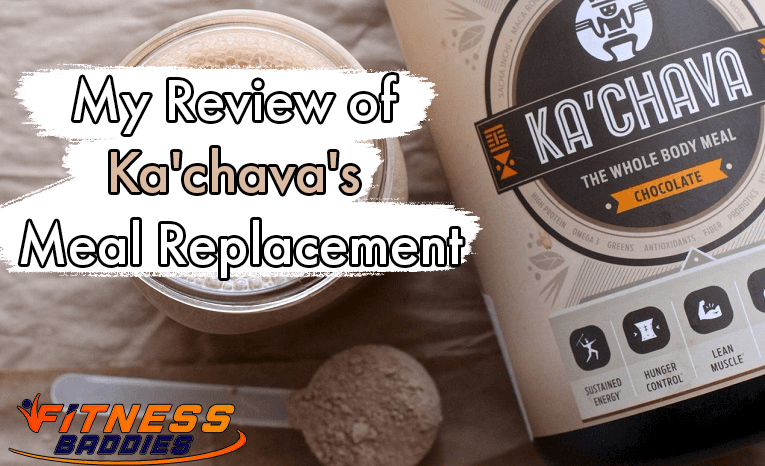Kachava Vs. Huel
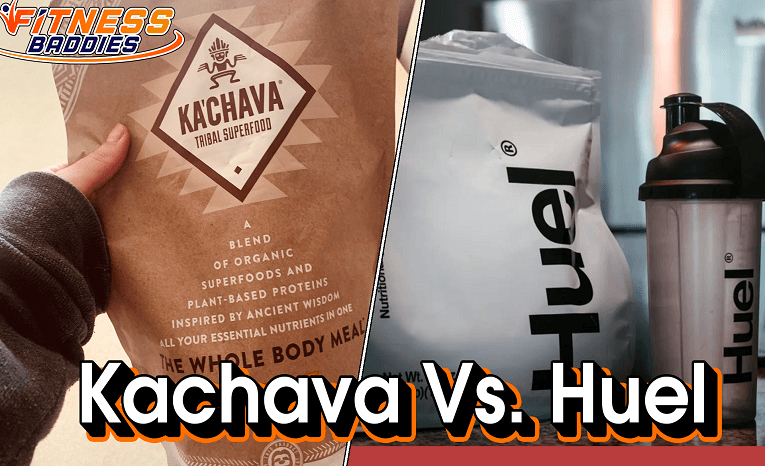
Meal replacement powders have finally gone mainstream. By mainstream, I mean that it is no longer a rare fact to hear that someone would prefer to sip down a chocolate flavored Kachava shake for their dinner over real food type meal.
For the longest time, the only people who used meal replacement powders were athletes who were looking to bump their calorie intake, or meet their specific macro nutrient counts.
The sudden surge in popularity can also be credited partly to more options. Unlike fifteen years ago when there was just a brand or two (that tasted like sludge), there are almost fifteen meal replacement brands that I can think of right away.
Just to give you an idea, I have tried each one of them.
The product that I stuck to for the longest time was Huel. The marketing was aggressive and the brand message seemed promising. But it was a little too ‘synthetic’ for my liking. Before the Huel minions start to foam at their mouth in anger, I am not talking about the ingredients here.
I am talking about the taste. I’ll get to that in a bit. For now, let me tell you about Kachava.
As luck would have had it, I discovered Kachava a good 6-months after I found Huel. But once I did, there was no looking back.
There is no comparison...
It blows Huel straight out of the water in terms of taste, value, ingredients and overall nutrient profile.
Today, I will run a one-on-one comparison of these two, on all critical parameters so that you get a fair idea of why I chose Kachava. In specific, I now drink this flavor here.
Another Better & Cheaper Alternative
For those that prefer to save a bit on the pocket, there is another cheaper alternative to both of these and it's one that is still far better than Huel. Its the Lyfe Fuel Essentials Shake. I use it currently and have been for quite some time now. You can check them out on their website here.
What Are Kachava And Huel?
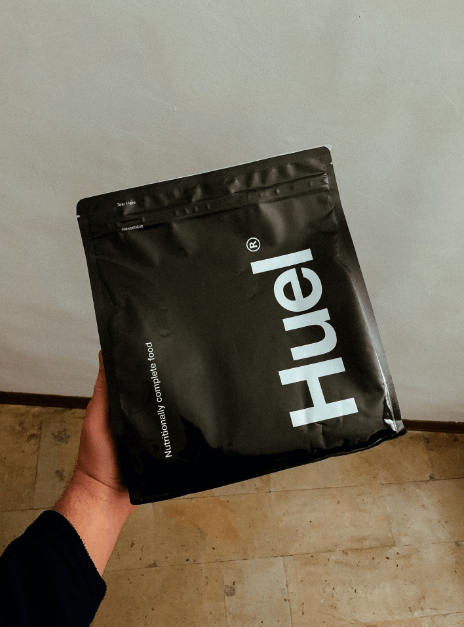
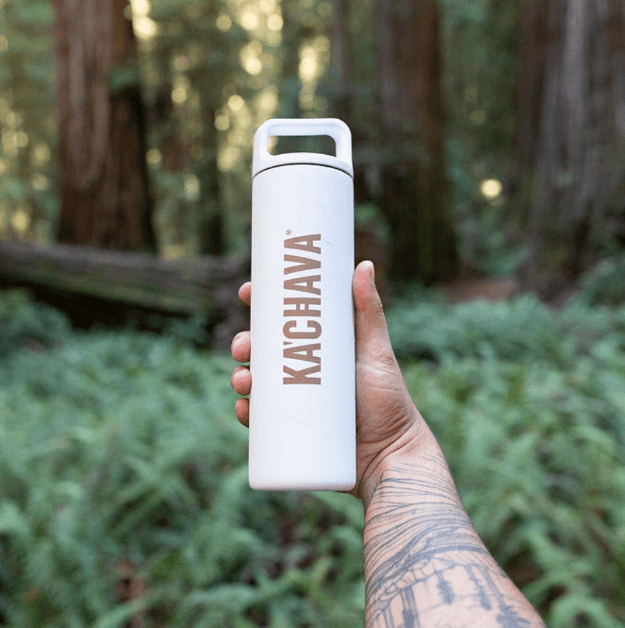
Someone new to meal replacement powders might think that this guy’s lost his marbles. So let me backtrack a little and explain to you what this blog post is all about.
Kachava and Huel are meal replacement powders. These are like premixed meals in powdered form that you can mix with water or juice or milk with a shaker, and gulp down.
Why would you want to replace a real meal with a premixed liquid, you might ask.
There are four reasons.
- I don’t find time to cook my meals.
- My job requires me to travel most of the time. So I have to rely on takeaway meals.
- Most takeaway food is junk.
- Meal replacement powders contain mostly natural ingredients, are plant based and can be chosen depending on the macronutrient profile and/or the calorific value.
Kachava and Huel, both have very unique nutrient profiles and calorific values. I will touch on this and a lot more in this article. So stay tuned.
History of Kachava
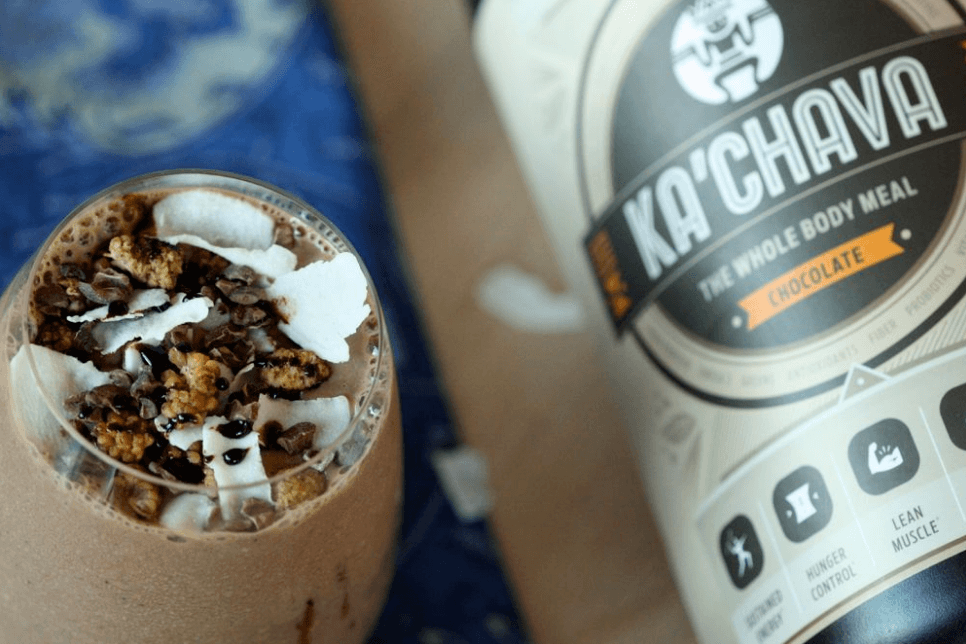
Ka’Chava was founded in 2012 by Tribal Nutrition LLC. The man behind the company is Simon Malone, a serial entrepreneur who claims to have designed Ka’Chava because he was tired of eating junk during his stint in corporate America.
Well, that sounds like a great story to sell.
I am sure that most of America will resonate with that. We all thrive on junk don’t we? Simon quit his job and took off on a tour of South America where he had the opportunity to witness the diets of indigenous tribes.
He was surprised to find that contrary to what most of the world believes, meat is not a prerequisite to have a well-rounded, protein-rich meal. I am sure that he already had an idea that there was a huge market for this in America.
So, he hung his own shingle and came up with Ka’Chava.
But Simon didn’t stop at just providing a meal that would get you the basics, like carbs, protein, fats and fiber. He also worked on the taste.
Tribal Foods LLC works closely with Rainforest Trust, a non-profit that’s working to protect endangered habitats around the world. So he’s doing his bit for society too.
History of Huel

Huel was formed 3-years after Ka’Chava was launched. But I think they had a much bigger launch and a strong PR machinery behind them. They were all over UK within a year or two of their launch.
In a couple of years, they had arrived in America with a distinct US-based formula.
Although tbh, from my point of view it looks as though they are a copy cat of Lyfe Fuel.
Huel seems to have taken on quite a few similarities to the Lyfe Fuel Essentials Shake, which I should add is still far better than Huel's shake.
The story goes that Julian Hearn, the founder was sick of surviving on Ramen and decided to team up with James Collier, a registered nutritionist who owned MuscleTalk, a Bodybuilding website, to come up with a meal replacement powder that was healthy and tasty.
In a year, they had launched the first Huel Meal Replacement Shake and it was very well-received by the fitness community. That’s to be expected given James Collier’s reputation and Julian’s business acumen.
In 2016, they launched a Gluten Free version of Huel. In 2017, James McMaster took over the reigns of the company to expand it to international markets.
Kachava – All You Need to Know
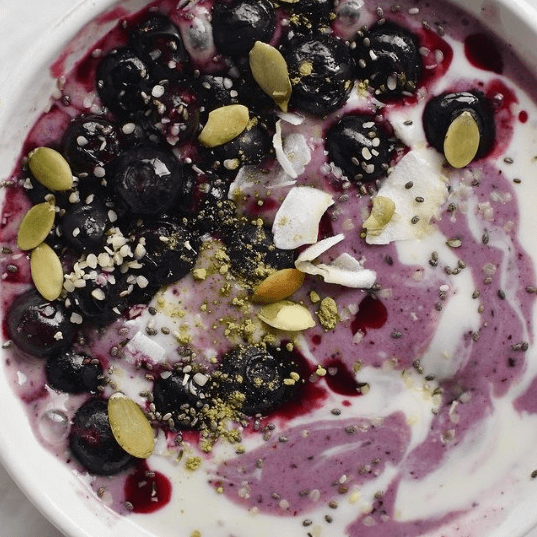
Enough history. Let’s get down to the meatier bits.
Ka’Chava is a complete plant-based meal. While convenience is definitely one of the benefits it brings to the table, there’s equal attention towards the nutritional profile. I mean, this isn’t some hyper-processed synthetic goop that’s designed to keep you alive.
Far from it. There are 70 ingredients in every Ka’Chava meal.
Here’s an overview of the important macros.
- Protein – 24.75 grams
- Carbs - 24 g total carbs and 17 g net carbs
- Fiber – 9 grams per serving
- Fat – 3.5 grams
- Fruit-based Antioxidants – 8.81 grams
- Adaptogens - 1 gram
- Veggies – 493 grams
- Digestive Blend – 100 mg
What Are the Various Meal Replacement Options Provided by Kachava?
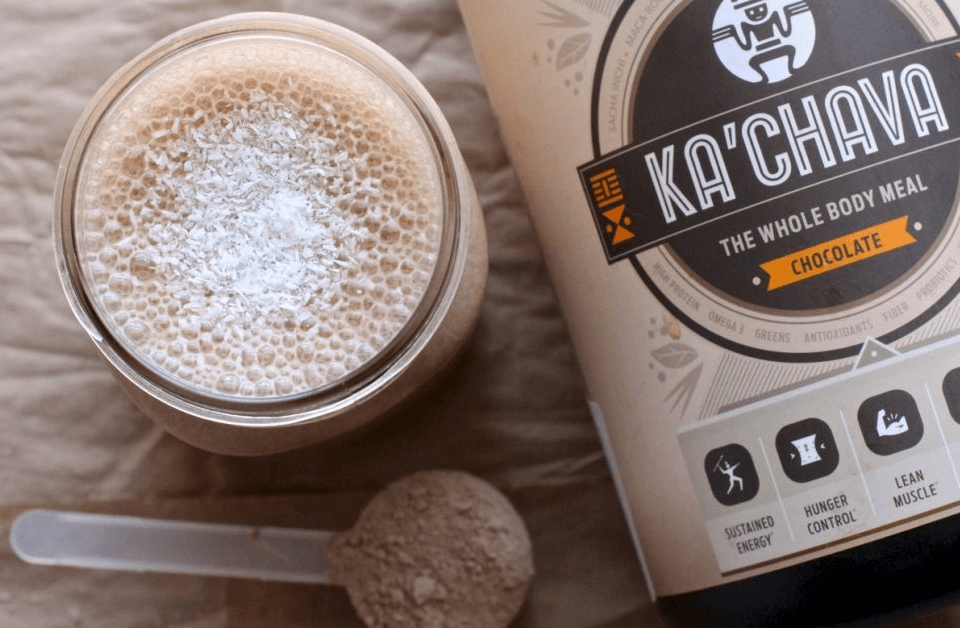
The one thing that I like about Ka’Chava is that they are not trying to expand into every single market out there.
They have a meal replacement powder that’s a winner. So, they are sticking to it.
So don’t get flabbergasted when you log on to the Ka’Chava website and find just two options.
There’s the meal replacement powder in Chocolate and Vanilla. Both are available in 15 meal bags. Here’s an overview of each flavor.
- Chocolate –While the 70 superfoods remain the same in both versions, the flavoring and other sundry ingredients change. The Chocolate flavor contains cocoa, Coconut milk, Cinnamon and natural vanilla flavoring. There’s a subtle bottom note of Vanilla. It’s hardly noticeable when you drink the shake. But if you are sensitive to flavors, you should be able to pick this up easily.
- Vanilla – The Vanilla comes with natural vanilla flavoring and coconut milk.
Both flavors use Lo Han Fruit Extract as the sweetener.
What Are the Benefits of Kachava?
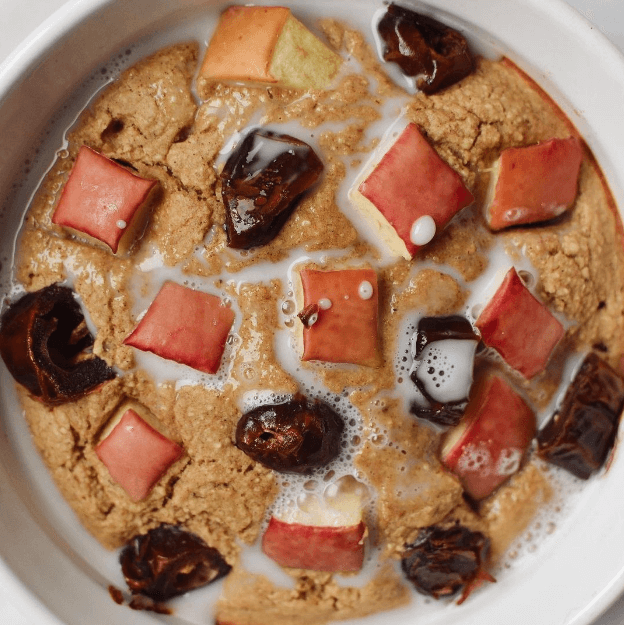
So, what are the perks of choosing Ka’Chava over Huel, which is clearly more popular?
Here’s what I think.
70+ Ingredients
I generally don’t get hung up over marketing claims. But this is far from a marketing claim pasted on the label. This is the real deal.
Every time I gulp down a Ka’Chava shake, I know that I just ingested 70 plant-based ingredients with zero artificial flavors or colors. Some of the ingredients are impossible to source from real food.
For instance, the fruit antioxidant blend. How many meals do you have that contains 9 fruits, including a powerful berry blend? How many meals in a week do you have that contains 17 green veggies?
Well I hadn’t had 17 green veggies since I was 7. Lol.
A Protein Heavy Macronutrient profile
Ka’Chava has a 42-44-14 macronutrient ratio with 42% protein, 44% carbs & 14% fat. Now, before you raise eyebrows, there’s 9 grams of fiber that comes with the carbs. So you can pretty much deduct that from the total carbs.
Also, the fiber ensures that the carbs are absorbed slowly and don’t trigger an insulin spike. I like the slight emphasis on Protein.
It keeps me satiated for longer. It helps protect from muscle loss when I am detraining. I used Kachava in my challenge to only take 2 protein shakes per day to lose weight and it fared pretty well because of it's macronutrient profile.
Much better customer rating
Ka’Chava has an average customer rating of 4.8 out of 5. I have spoken to fitness instructors, cross country athletes, students, Wall Street execs and even Ninja mothers. Everyone loves Ka’Chava. That’s a pretty wide demographic, isn’t it?
What Are the Cons of Kachava?

To be honest, there’s not one thing that I dislike about it. But I have heard a few gripes that people have against it. It primarily has to do with two things.
- Price – Some people complain that Ka’Chava is more expensive than the rest of the brands. That’s true. But given the quality and the small price difference, it’s not a deal breaker for me.
- Lack of Options – Huel gives you more options. There are the ready to go drinks, there’s Huel black as well as the energy bars. But, since we are talking about meal replacements here and not fitness foods, I think it would be unfair to label Ka’Chava as not varied enough.
Huel – All You Need to Know
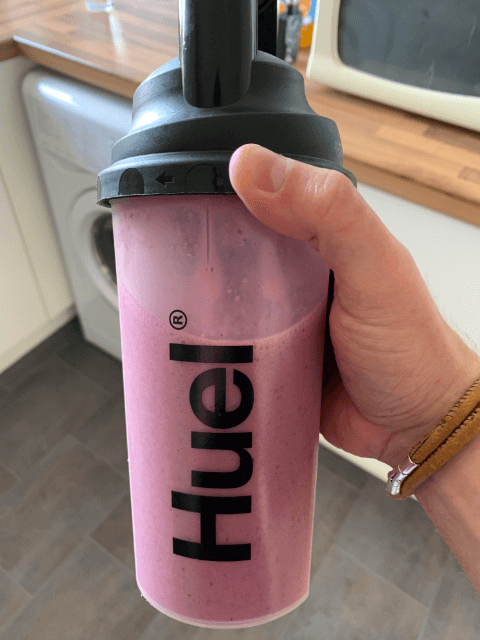
‘Huel’ which stands for Human and Fuel is a UK-based meal replacement brand, which has since then expanded into fitness foods.
Their USP is that their meals provide you with a more generic macronutrient profile, along with 27 essential vitamins and minerals. Just like Ka’Chava, the meals are completely plant-based with no animal-based, or GMO products.
If you are looking for a more fitness centric meal, you can opt for Huel Black which contains 40 grams of protein and just 17 grams net carbs. On the other hand, if its convenience you seek, then Huel has a ready-to-drink meal on offer.
This helps you avoid the trouble of ripping open a sachet, throwing in some liquid and giving it a whirl.
What Are Various Meal Replacement Options Are Provided by Huel?
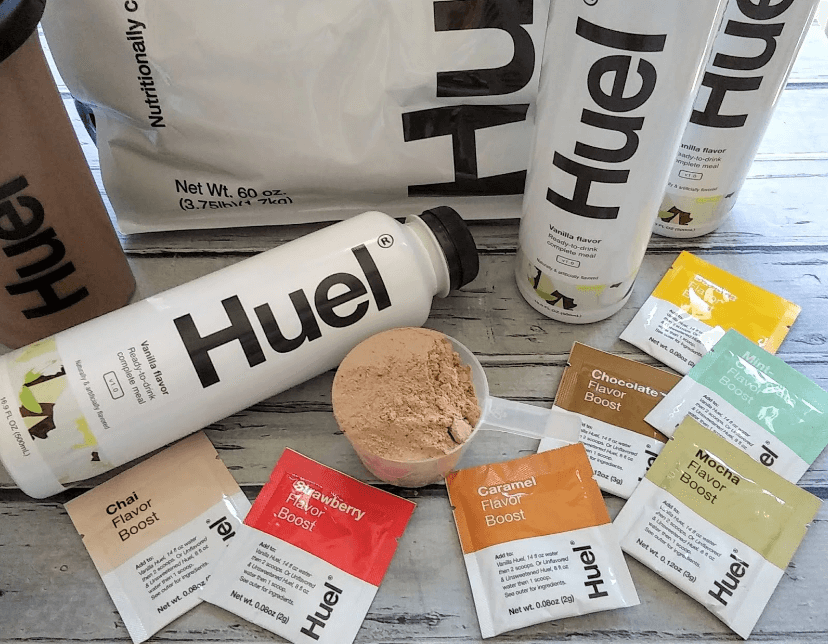
This is where Huel scores over Ka’Chava. When you log on to their website, it seems like the equivalent of a fitness super market.
- Huel Powders – These are the original Huel Formula with a 37:30:30:3 macronutrient split. That’s 37% carbohydrates, 30% protein, 30% fat and 3% fiber. There’s a more recent version of this called ‘Huel Powder 3.0’ which has less than 1 gram Sugar and is also available in a Gluten Free version.
- Hot & Savory – This is a pre-packaged meal with rice, quinoa, vegetables, herbs and spices. The kind that’s used by Preppers. You throw in a couple of scoops, add boiling water or Microwave it and you have a Huel Meal that’s more flavorful and meal-like as opposed to the shakes. This is available in six flavors. There’s Thai Green Curry, Yellow Coconut Curry, Spicy Indian Curry, Mexican Chilli, Tomato & Herb, & Sweet and Sour.
- Huel Bar – Perfect for a quick mid-day snack.
- Huel Ready-to-drink Meals – Available in Banana, Vanilla, Chocolate & Berry flavors. This one has 20 grams of Protein only though.
- Huel Black – Picture the Huel Powder with 50% less carbs and 33% more protein.
What Are the Pros of Huel?
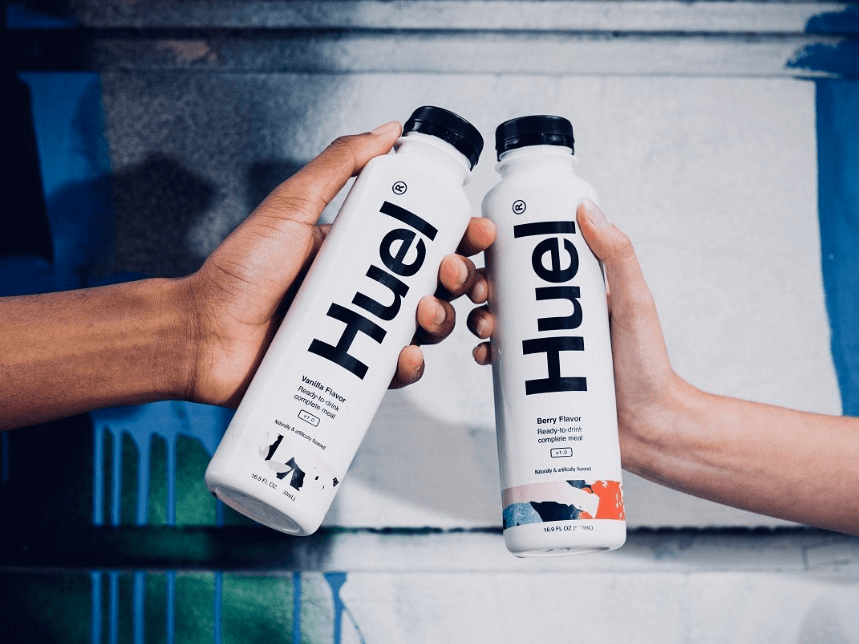
What is it about Huel that makes it so popular with the health and wellness crowd in multiple countries? Let’s find out.
- More options – The sheer variety of products on offer makes Huel a better choice for anyone who wants to be more macronutrient specific in their meals. For instance, if someone wants a more balanced meal, they can choose the powder. But if they missed their post workout nutrition and want to fill the gap, they can choose Huel black.
- More flavors – While Ka’Chava chooses a no-frills approach to their business and products, Huel keeps expanding with flavors. A case in point is their most basic offering, the Huel meal replacement powder. It’s available in Banana, Vanilla, Peanut Butter, Salted Caramel, Caffe Latte, Chocolate, Berry, the Original nutty flavor & an unflavored version. If one of these doesn’t tickle your taste buds, you can try something else. You don’t get that luxury with Ka’Chava.
- Cheaper – Huel’sbiggest USP in my opinion is the pricing which is comparatively cheaper than Ka’Chava as well as other leading meal replacement brands. If you buy two bags of Huel Powder, each meal is priced at just $1.91. The hot and savory meal is $3.28/meal and the ready to drink meal is $3.71/meal.
What Are the Cons of Huel?

If you are willing to look beyond the hype, Huel fares no better than most other run-of-the-mill meal replacement brands out there vying for your attention.
- Tastes horrible – I know that taste is subjective. But I am clearly not the only one who feels that Huel’s meal replacement powders taste like goop. Even when I compared Huel to Shakeology, Huel tasted worse. There are multiple reviews that mirror my exact thoughts. Why, there’s a journalist who used it for two weeks and compared it to vomiting in reverse. While I wouldn’t go to that extent, I definitely feel that every Huel flavor has a distinct synthetic aftertaste. The irony is that I bought the original flavor, which was too bland. The moment I added any flavor boost sachet, it left a lingering aftertaste in my mouth.
- Not the best ingredient list –Sure. I love the Oats, Pea & Brown Rice Protein blend, & the Sunflower & Flax seeds. But that’s about it. There’s nothing out of the ordinary in Huel. For this reason, if you look at the branding, bulk of it focusses on the convenience aspect, rather than the actual ingredients. The Wiki page also mentions that they use sucralose, maltodextrin, and xylitol.
Kachava vs Huel: What Are the Similarities?
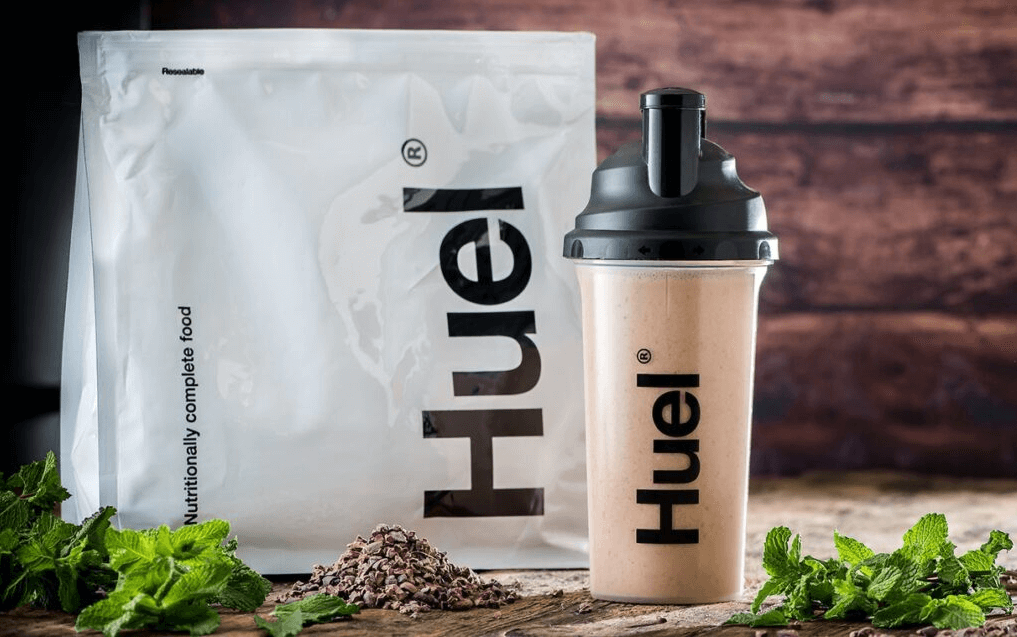
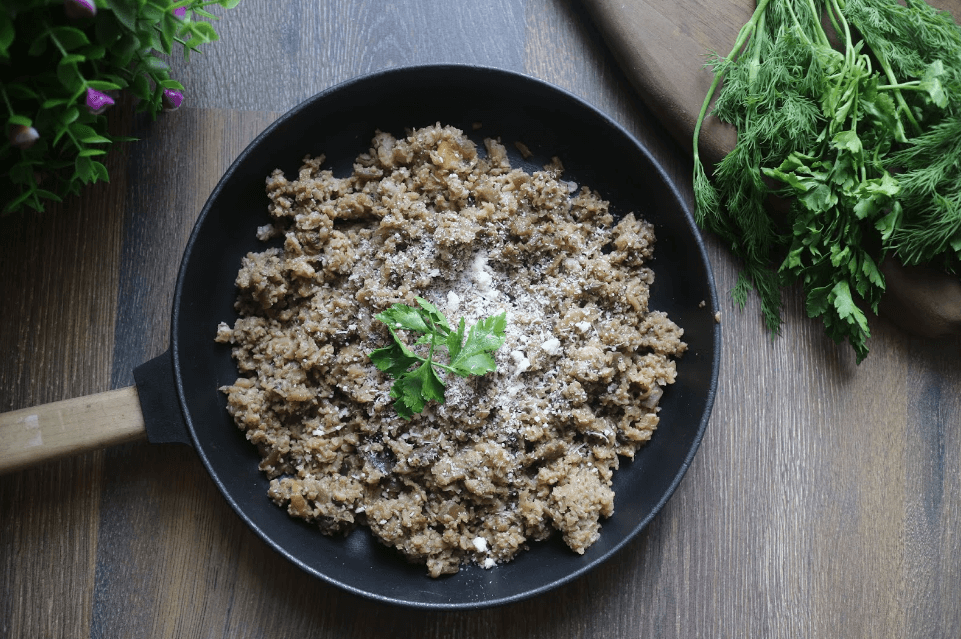
After using both meal replacement powders (and Huel’s ready to drink meals) for a long time, here are the similarities in the two.
- Both are plant based meals – Both Ka’Chava and Huel are completely plant based and vegan. You may not want to hop on the vegan brigade. But you may want to consider reducing the amount of meat you consume. These fit the bill.
- Excellent Micronutrient profile – Sometimes we all get hung up over the macronutrient count, forgetting that the micronutrient profile is equally important. Ka’Chava contains 26 Vitamins and Minerals. Huel contains 27.
- Both mix fairly well – Both powders mix very easily. I have been drinking these on-the-go in my car. Never faced a problem with undissolved lumps of powder.
Kachava vs Huel: What Are the Differences?

While there are only a handful of similarities, the differences in the two are stark.
- A lot more nutrition with Ka’Chava – Ka’Chava just crams every possible plant-based nutritional ingredient into their shake. You are getting 70+ ingredients in every meal. In comparison, Huel looks tepid. They don’t mention their actual ingredient count in bold. But we know for sure that it’s nowhere close.
- More flavors and choices with Huel – Huel gives you more flavors and more options. But you need to ask yourself whether it’s more flavors and options you seek, or better nutrition? I seek the latter.
- Better taste with Ka’Chava – Despite just two flavors, Ka’Chava tastes delicious. Huel oscillates between the two extremes. It’s either too sweet or too bland.
Between Kachava and Huel, Whose Meal Replacement is of better quality?
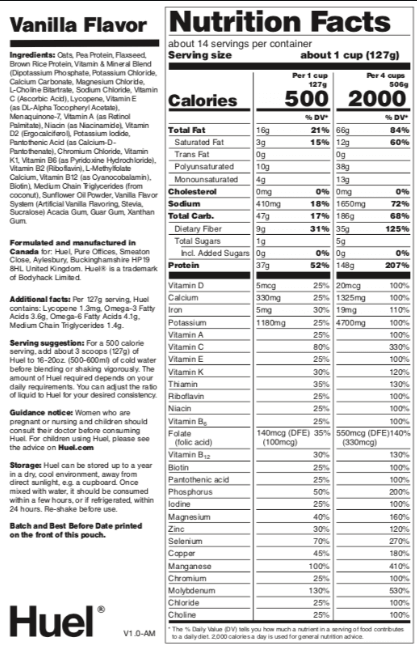
Ka’Chava is the clear winner. It has more natural ingredients, powerful adaptogen herbs, super fruits and veggies. You are not missing out on anything. Huel might be great for someone who wants to club their post workout protein shake and meal into one.
But if you compare the taste and nutrient profile, it would be easy to find the answer.
Which Meal Replacement is Healthier, Kachava or Huel?
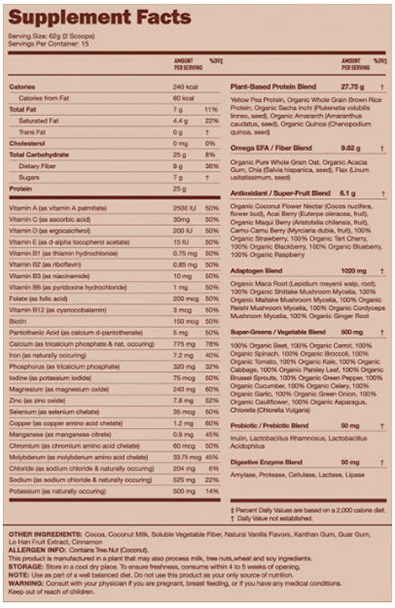
Definitely Ka’Chava. Sorry to sound like a broken record, but its 70 ingredients. They say the more colorful your dinner plate, the better it is, right? How much better can it get than this? There’s vitamins, minerals, electrolytes, probiotics.
Which One Has More Flavors Available, Ka’chava or Huel?
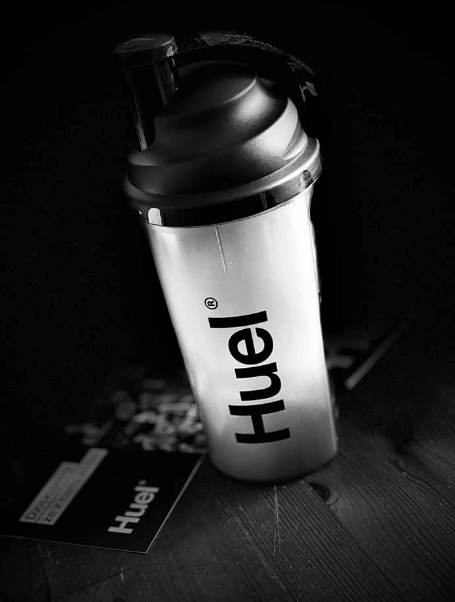
Huel has more flavors. They do deserve some credit here. They have constantly tried to stretch the envelope by adding more flavors and products to their catalog.
How Does Kachava and Huel Compare When It Comes to Price?

If you buy it one time, a Ka’Chava meal costs you $4.66. If you subscribe, the price drops down to $3.99.
In comparison, Huel at $1.91/meal seems like a great buy. But, I personally don’t consider $4.66 to be too steep for a great meal. Do you?
What Are the Reviews Saying on Each of Them?
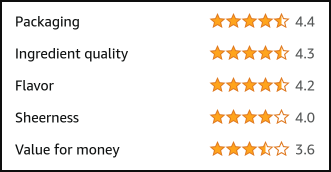
While both brands have positive reviews overall, Ka’Chava has better reviews. If you spend some time digging through messaging board posts, you’ll discover that the overall product reviews for Huel are ‘meh’.
What do reviews say about Kachava?
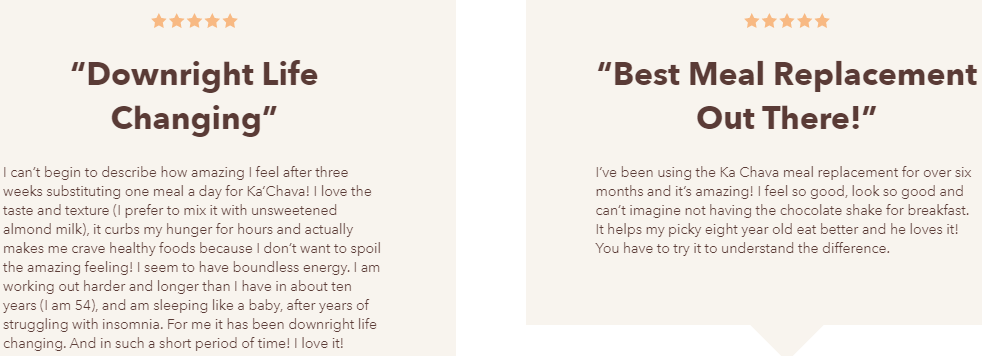
Ka’Chava has an average rating of 4.8 out of 5 from nearly 17000 reviews. That’s no mean feat. Most reviews speak about the quality, how great it tastes and how light it feels on the tummy. There are customers who have used this to achieve their weight loss goals as well as an everyday meal.
What do reviews say about Huel?
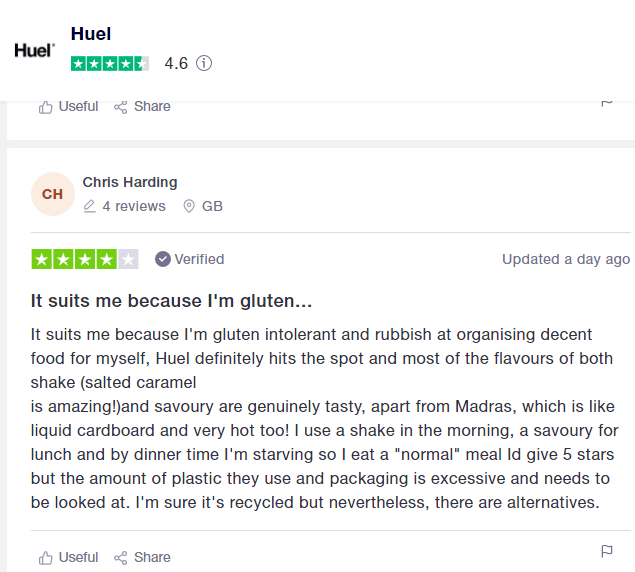
If you look up on Google, you’ll mostly find good reviews. But I’d take these with a grain of salt. It’s mostly affiliates looking to promote the product. If you want to find the actual reviews, go to Reddit. Most users complain that it tastes like crap. That’s even now in 2021 after all the claims of the taste improvement. Some users also mention that they feel hungry a lot quicker when they use Huel. Maybe it has something to do with the lower fiber content?
Kachava vs Huel: My Personal Recommendation, Which Meal Replacement You Should Buy
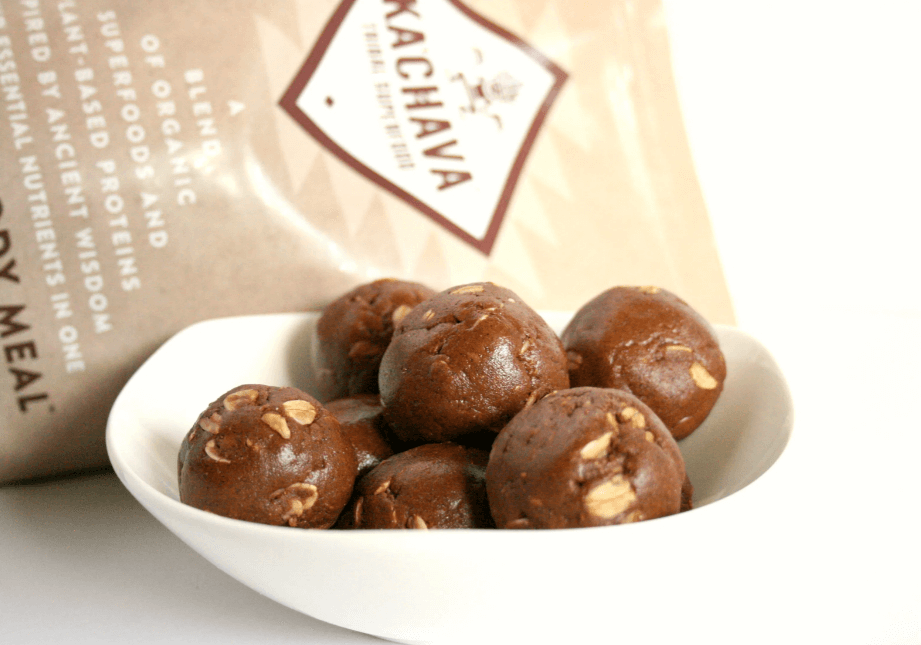
I have used both these shakes and most of the others too. I personally feel that nothing even comes close to the quality and the nutrition that Ka’Chava offers. I mean, this is a real meal replacement powder.
The rest are just protein shakes trying to masquerade themselves as a full meal. Don’t get swayed. Go for Ka’Chava.
Related Readings:
- Tips & Strategies I Used to Stop Eating Sugar
- Calisthenics Vs Weights | Which Is Best for Building Toned Muscle?
- I Did Squats Every Day for 3 Months – Should You? Here’s What I Learned
- How Many Calories Do Jumping Jacks Burn?
- 12 Pack Abs, 12 Pack Abs Workout

